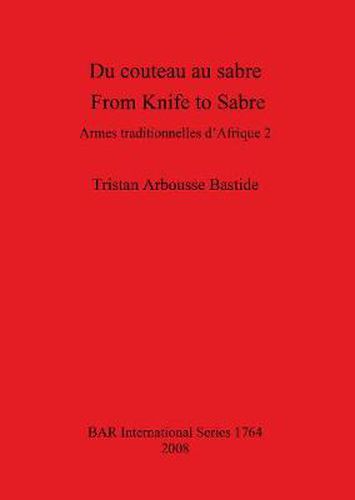Readings Newsletter
Become a Readings Member to make your shopping experience even easier.
Sign in or sign up for free!
You’re not far away from qualifying for FREE standard shipping within Australia
You’ve qualified for FREE standard shipping within Australia
The cart is loading…






This title is printed to order. This book may have been self-published. If so, we cannot guarantee the quality of the content. In the main most books will have gone through the editing process however some may not. We therefore suggest that you be aware of this before ordering this book. If in doubt check either the author or publisher’s details as we are unable to accept any returns unless they are faulty. Please contact us if you have any questions.
In this second volume dedicated to the study of African edged weapons (see BAR 1098, 2003 for volume 1), the author focuses on short-knives, cutlasses, chopping-knives,machetes, and sabres. These weapons are characterized by a blade with a convex or eventually a straight single edge and sometimes a limited false edge. Also included in this study are weapons with a curved double cutting edge. The typology presents five main categories, the distinctions between them being established according to morphological and metrical evidence based on the observation of 275 weapons. These weapons, collected during the colonial era (mainly at the end of the 19th century and the early 20th century), are held by various European museums and private collections. Several areas in Africa are represented in this study: Northern Africa (from Morocco to Tunisia), Western Africa (countries from the Gulf of Guinea and Sahara), Central Africa (mainly the Democratic Republic of Congo and neighbouring countries), Eastern Africa (the Great Lakes area up to Djibouti, Sudan as a northern limit and Kenya as a southern limit). The categories studied are: short knives, cutlasses, chopping knives, ‘machetes’, and sabers. The work is illustrated with the author’s own highly-detailed drawings.
$9.00 standard shipping within Australia
FREE standard shipping within Australia for orders over $100.00
Express & International shipping calculated at checkout
This title is printed to order. This book may have been self-published. If so, we cannot guarantee the quality of the content. In the main most books will have gone through the editing process however some may not. We therefore suggest that you be aware of this before ordering this book. If in doubt check either the author or publisher’s details as we are unable to accept any returns unless they are faulty. Please contact us if you have any questions.
In this second volume dedicated to the study of African edged weapons (see BAR 1098, 2003 for volume 1), the author focuses on short-knives, cutlasses, chopping-knives,machetes, and sabres. These weapons are characterized by a blade with a convex or eventually a straight single edge and sometimes a limited false edge. Also included in this study are weapons with a curved double cutting edge. The typology presents five main categories, the distinctions between them being established according to morphological and metrical evidence based on the observation of 275 weapons. These weapons, collected during the colonial era (mainly at the end of the 19th century and the early 20th century), are held by various European museums and private collections. Several areas in Africa are represented in this study: Northern Africa (from Morocco to Tunisia), Western Africa (countries from the Gulf of Guinea and Sahara), Central Africa (mainly the Democratic Republic of Congo and neighbouring countries), Eastern Africa (the Great Lakes area up to Djibouti, Sudan as a northern limit and Kenya as a southern limit). The categories studied are: short knives, cutlasses, chopping knives, ‘machetes’, and sabers. The work is illustrated with the author’s own highly-detailed drawings.